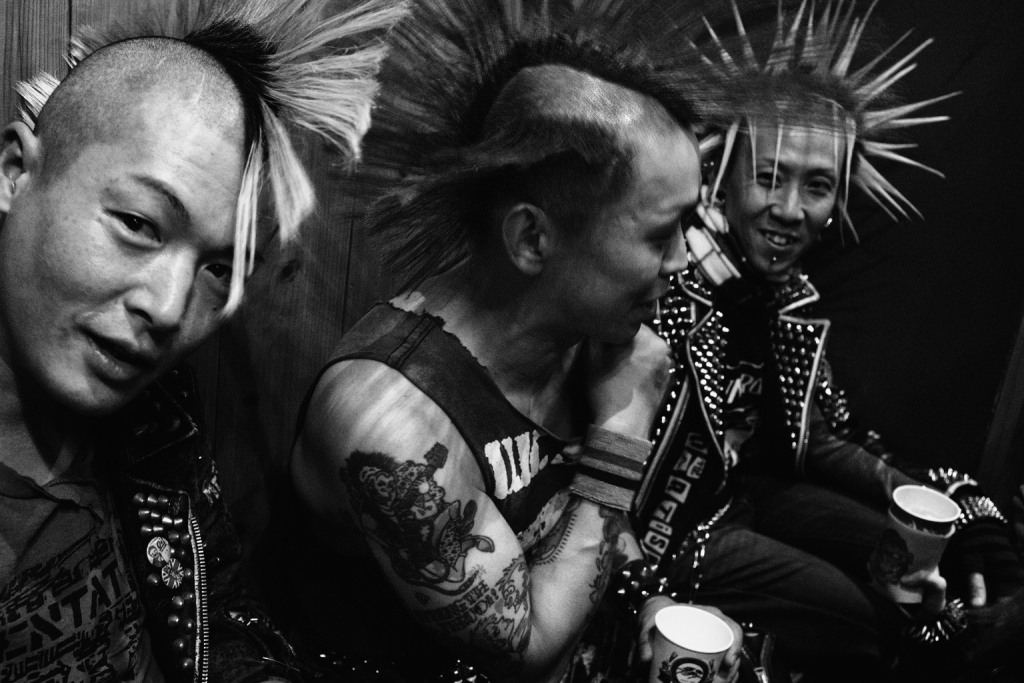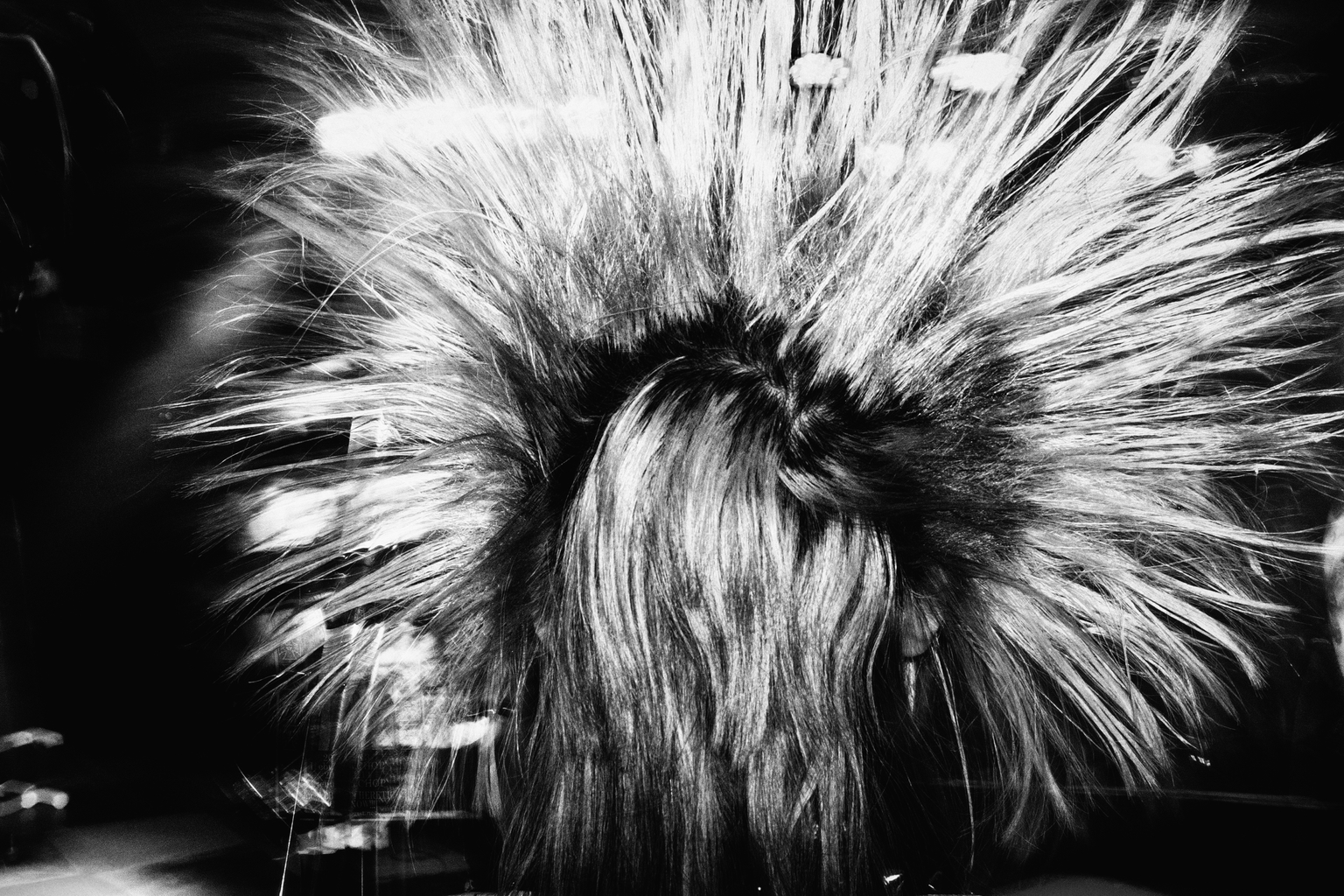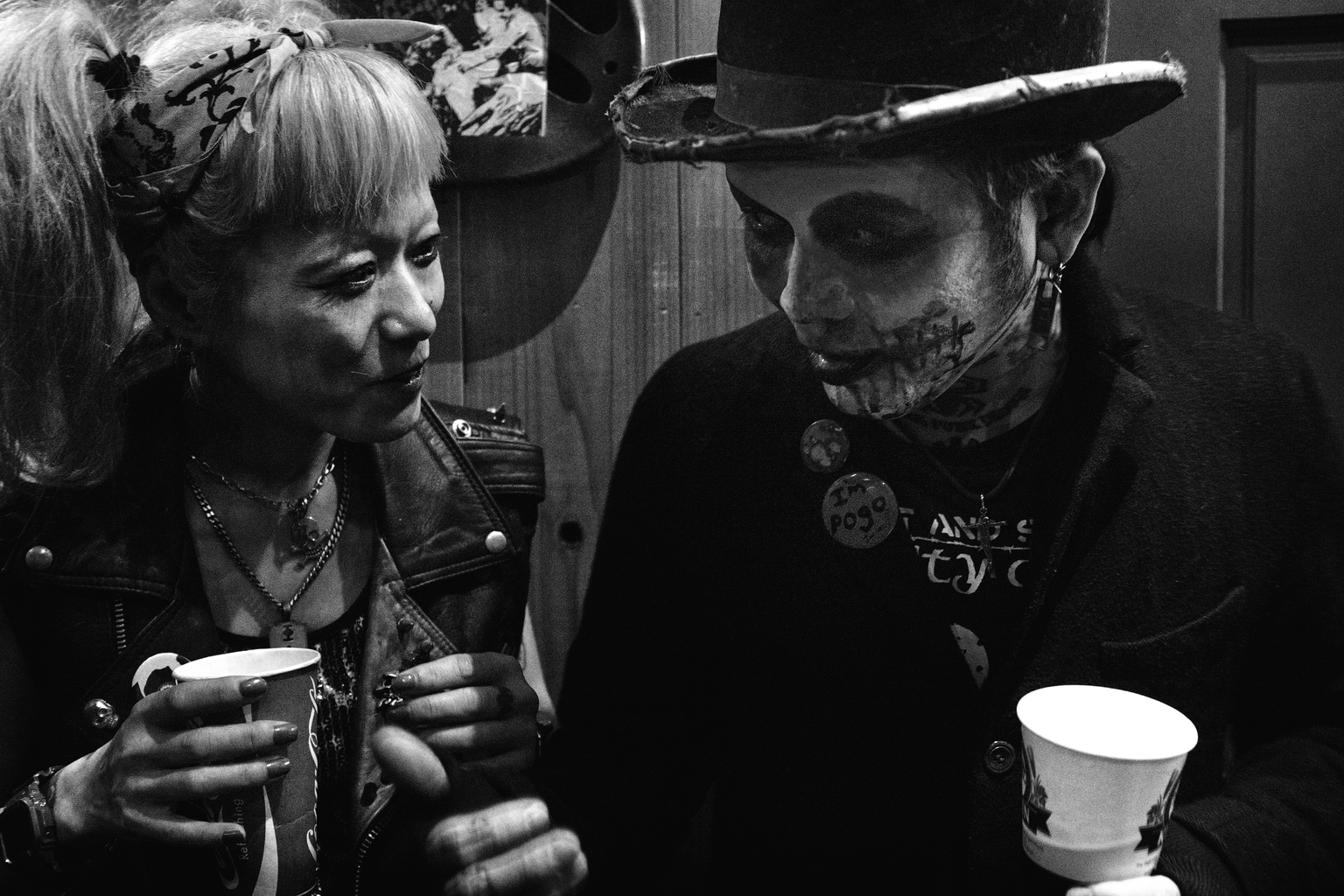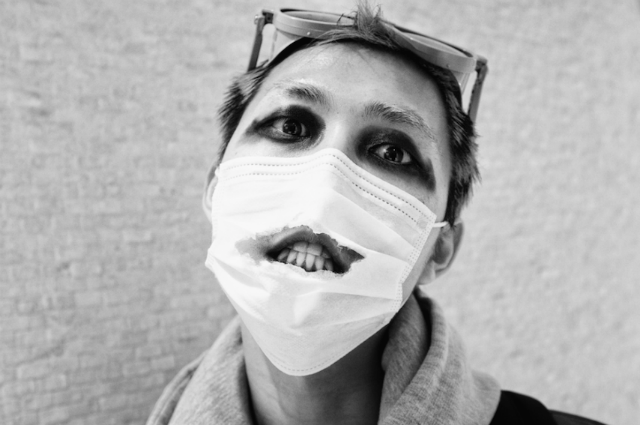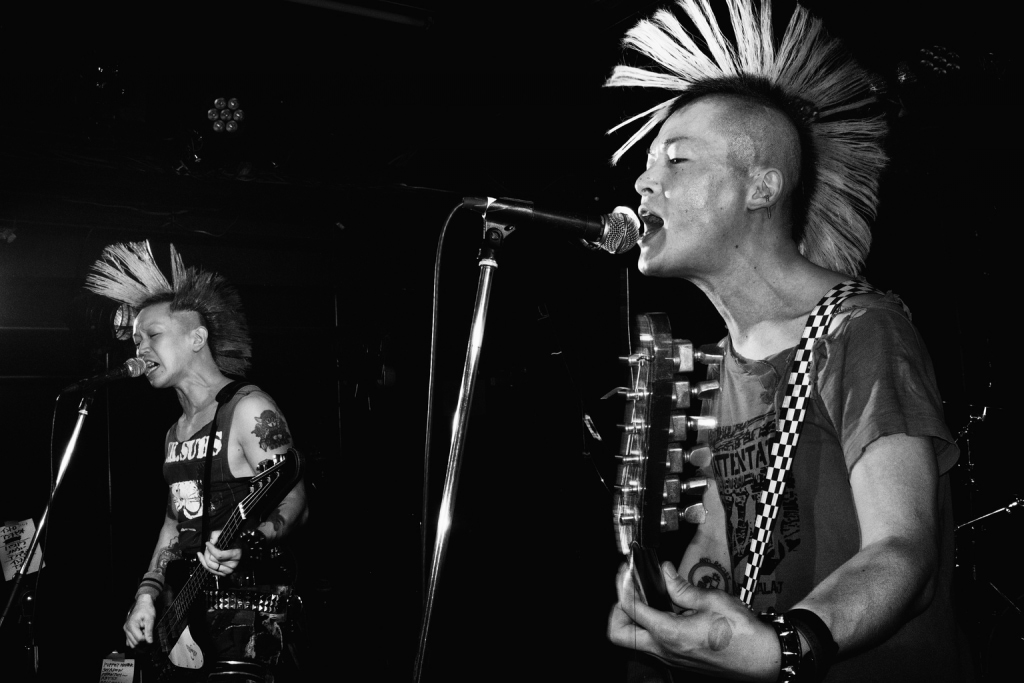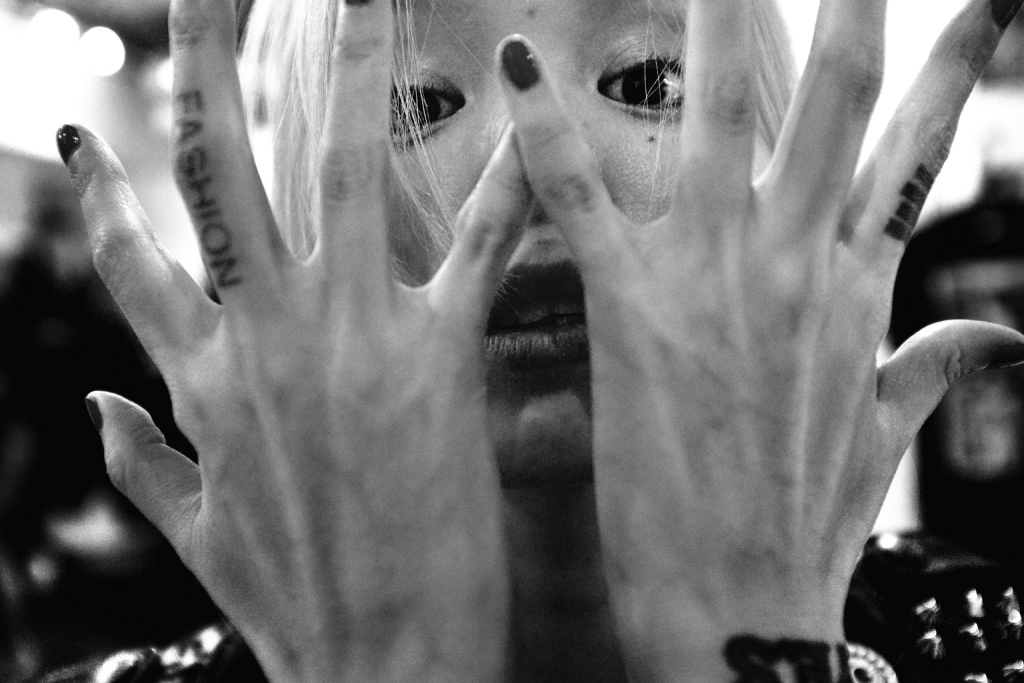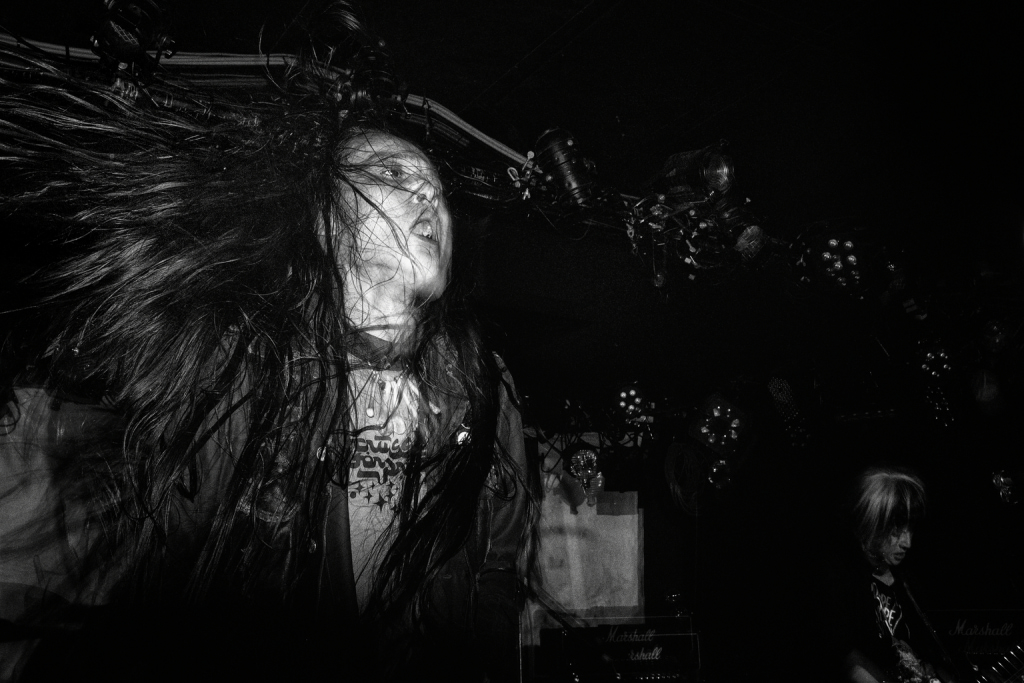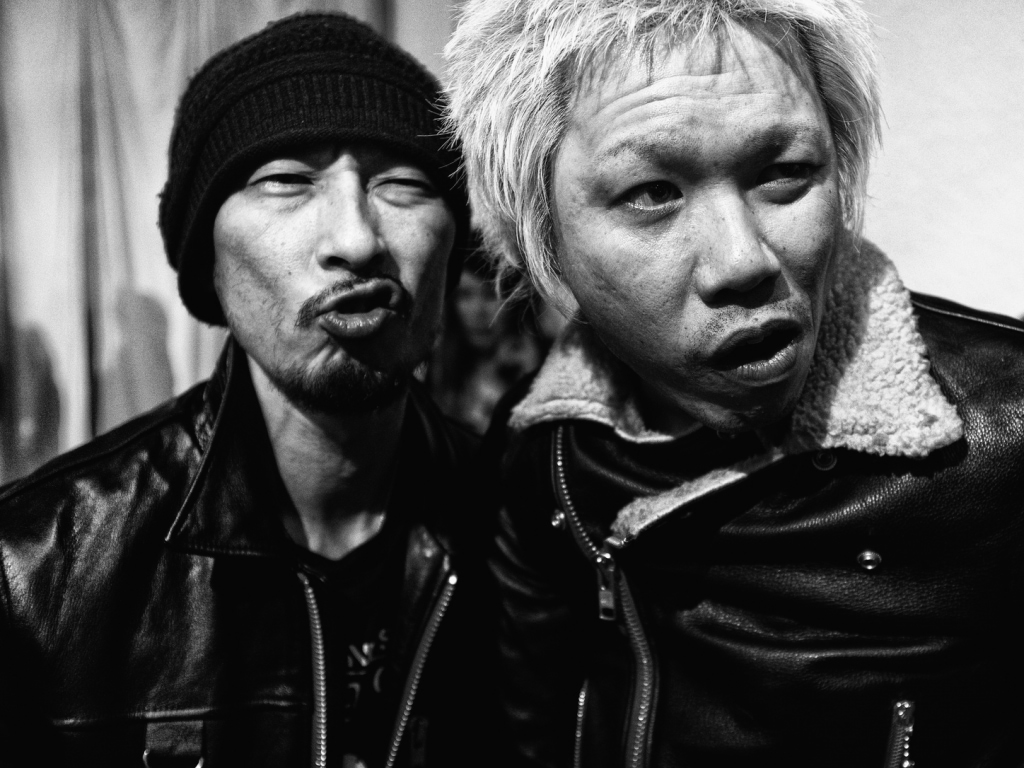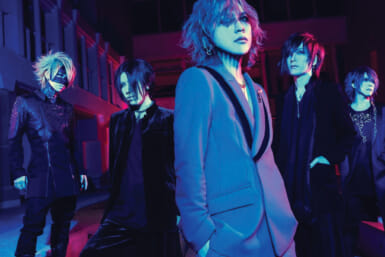“All punk is is attitude. That’s what makes it. The attitude.” —Joey Ramone (The Ramones)
There’s no doubt about it. Whatever you’re into – no matter how obscure – there’s a scene for you in Tokyo. Unsurprisingly, pulsating beneath the city’s glitz and glamor, an underground punk scene has been thriving for many years. Despite UK bands like Sex Pistols, The Clash and The Damned, New York’s Ramones and even Australia’s The Saints being credited for bringing the ‘punk’ aesthetic, sound and attitude into the global psyche, Japan has done an incredible job of keeping the spirit of the genre’s forefathers alive since then, with an unwavering allegiance to all things DIY and leather-clad.
Showcasing Tokyo’s especially active and loyal punk community, creative director, stylist and designer Harris Elliot has curated a photography exhibition in conjunction with local fashion brand Leather Japan, which has recently been on show in London.
We were lucky enough to get our hands on a selection of the photographs and chat with the man himself.
You’re a self-described “visual storyteller.” For those that may not know your work, how would you describe what you do and what are a couple of your proudest achievements?
I collaborate with artists and brands to create visual narratives that present unique exhibitions or brand stories that engage with audiences on multiple levels.
Proudest achievements: I worked with Takeo Kikuchi on his 30th anniversary show in Tokyo, It was an honour to be the stylist for possibly one of Japan’s most important designers. I created “Return of the Rudeboy” exhibition with photographer Dean Chalkley. Over 60 images were shown for 10 weeks at London’s Somerset House and also exhibited at Laforet in Harajuku throughout March 2015.
Can you give a quick overview of what the “Punk in Translation” project is and who was involved?
Leather Japan commissioned me to create a project that they could showcase in London 2016, during “London Collections: Men.” I devised the concept for “Punk in Translation,” a photographic and cultural installation that documents the current Tokyo punk communities and bands. I worked very closely with fashion label Blackmeans. They introduced me to their world – the bands and the venues, as they are a very integral part of the Tokyo punk scene.
The exhibition was showcased at The Horse Hospital, a venue that has a rich punk lineage connection with its proprietor, costume designer Roger Burton.
Where did the inspiration for the exhibition come from?
Japan is renowned for its various style tribes: the punk scene is rich with references. I’m inspired by Japanese films and photography that bring chaos and energy into view. I wanted to create an installation that brings that chaos and energy of punk and Japanese youth culture, which you don’t often see any more with new photographers to tell the story of what is happening today.
Why have you focused on Tokyo?
If I had the time I would have traveled throughout the country to other cities and prefectures, but that would have been a much bigger project, and unfortunately there wasn’t time to do that.
Have you spent much time in Tokyo? Do you have a personal connection with Japan?
My personal connection with Japan came from when I studied interior architecture. Some of my favorite architects were Japanese — Tadao Ando and Kenzo Tange. From that time, I was eager to visit the country and explore the cities and the magnificent contemporary and historical approach that Japanese society has to architecture. When I switched to a career in fashion, my interest in Japan grew even more as then the vibrant and non Western aesthetic blew my mind. I visit Japan every year to work on projects.
You worked with Japanese documentary photographers Yusuke Yamatani, Tasuo Suzuki and Naoya Matsumoto on the project. Did you know each other previously? How were these relationships established?
I had followed and befriended Tatsuo Suzuki on Instagram; his dynamic photography stands out from the daily plethora of images that you see. When this project started, I was insistent that he had to be part of it. Yusuke Yamatani and I worked closely together at Kappunk, the annual Tokyo punk festival. We also photographed various gigs together and captured portraits of some punks on the street. Naoya Matsumoto shot all the editorial style portraits of the 43 bands backstage at Kappunk in October.
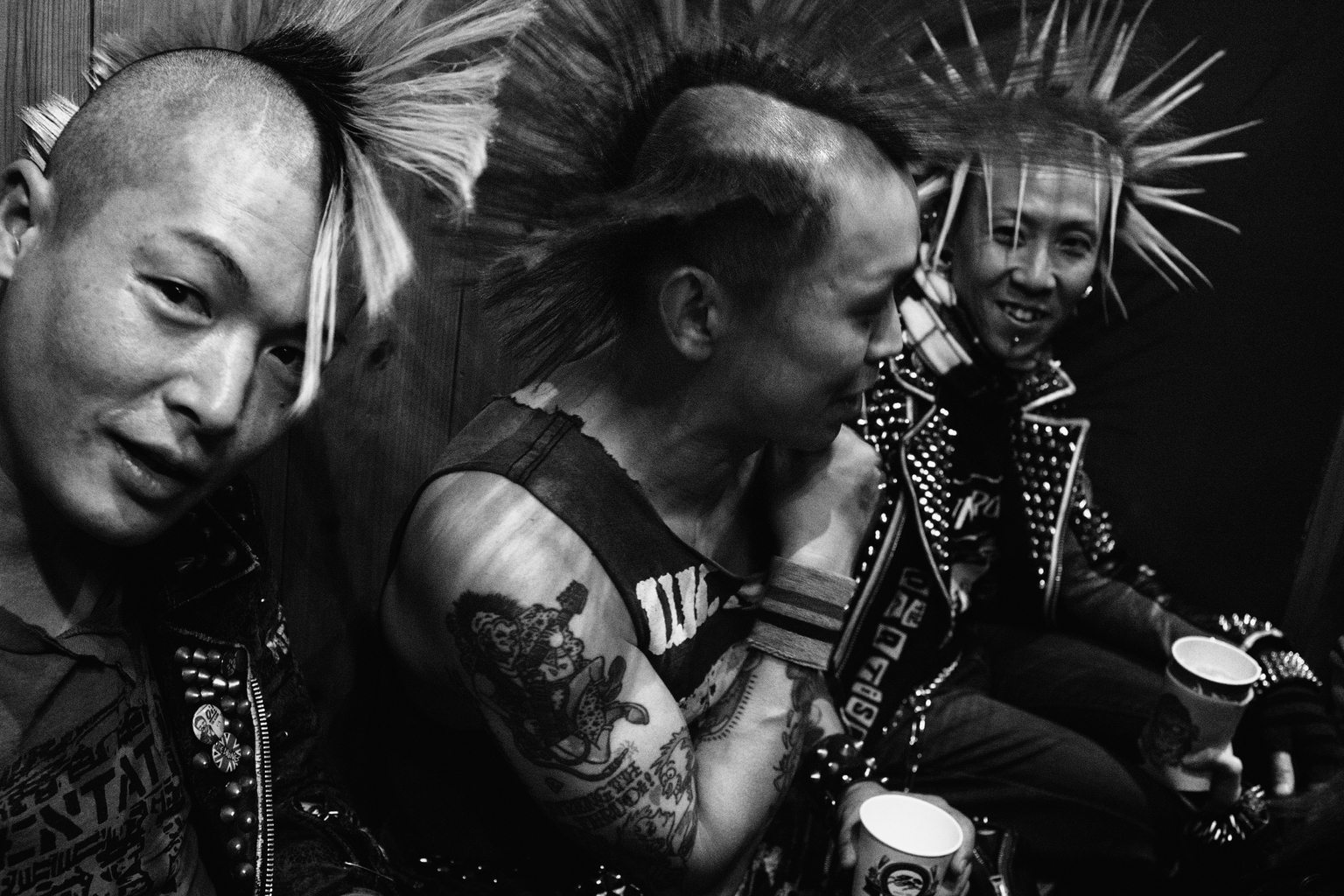
Tokyo-based punk band ‘The Erections’
What was your specific role within the project?
It was my idea to focus on punk, I art directed the photography from the first shoot, I sourced the venue and introduced the project to the UK.
Where and what do you see as the birthplace of “punk” and what does it mean to you?
The birthplace of punk for me is London, with the Sex Pistols, The Clash and the mash up of cultures and anti government feeling.
Punk means DIY culture; reclaiming the streets. When the everyday people are fed up of being lied to and patronized by the leaders of society, a chemical reaction takes place and people react to what information is fed to them. This reaction embodies politics, art, music and literary thought. This is punk.
When did punk first find its feet in Japan and what is it about the Japanese take on the punk aesthetic that is most unique?
Japan had their own punk bands like The Stalin in the late 1970s. The punk ethos has continued there since then. The punk clothing has been taken to a new level, with leather handcraft techniques that are still DIY but incredibly refined. The brand Blackmeans makes meticulous studded garments that embody their take on punk.
Why do you think there was an attraction to UK punk fashion and music in Japan?
I believe the UK expression of punk appealed to Japanese youth as it gave them examples of how they could express themselves. They were able to identify with some of the ideology and given examples of western rebellion which had never been expressed in that way before.
What are the major differences between the UK and Japanese punk scenes?
In Japan the punk scene is still very visual and the Japanese punks embrace the early fashion aesthetic of punk. In the UK punk is purely about attitude. Few punks have spiky colorful hair or studded clothes, but the anti-establishment feelings through music and art are still strong in the UK regardless of what the punks wear.
What is your favorite photo from the “Punk in Translation” exhibition? Why?
One of my favorites is this shot of the singer from Hazard by Yusuke Yamatani. We were sitting outside Kappunk in Kawasaki when this shot was taken. There’s no frills or performance but a flash captured moment of someone who embodies Japanese punk.
I also love this shot by Tatsuo Suzuki of 99percentis, who is a Korean designer based in Tokyo. The face mark is an identifiable element predominantly associated with Japan. He always rips the mouth out which makes a total punk statement.
Do you have any plans to exhibit the shots in Tokyo at some point?
When we started this project we discussed bringing the project to Tokyo a year later. We haven’t developed that side yet… so watch this space….
Do you have any other exciting projects coming up?
Always haha… “Return of the Rudeboy” will hopefully be traveling to a new international destination this year… to be confirmed. I’m also working on two new cultural art projects.
Thank you for you time, and rock on!
–Chris Zajko

